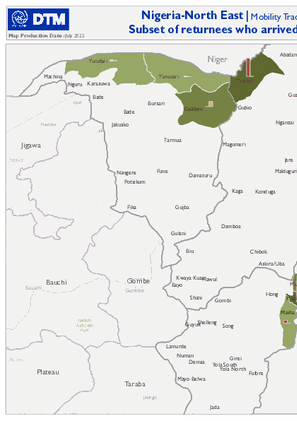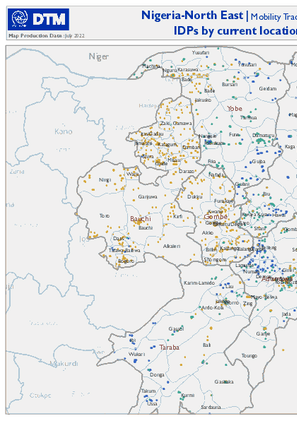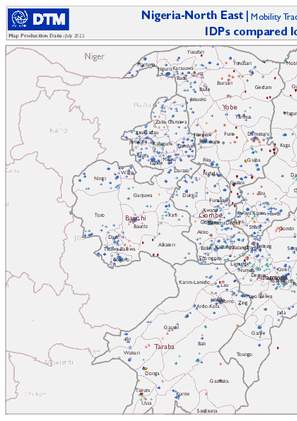-
Countries
-
Data and Analysis
-
Special Focus
-
Crisis Responses
Estimated number of IDPs and Returnees in Bauchi State
Estimated number of IDPs and Returnees in Adamawa State
Returnees by Current Location and by Previous Displacement
Returnees round comparison at LGA
Returnees and Shelter Status
Returnees by LGA and period of arrival
Returnees by LGA
IDPs by current location and by location of origin

Contact
DTMUkraine@iom.int
Language
Ukrainian
Location
Ukraine
Period Covered
Jul 17 2022
Jul 23 2022
Activity
- Survey
Війна в Україні, яка розпочалася 24 лютого 2022 року, спричинила безпрецедентну гуманітарну кризу, що охопила всі області країни. У період з 17 по 23 липня Міжнародна організація з міграції (MOM) провела сьомий раунд репрезентативного експрес оцінювання загального населення України для збору інформації стосовно потоків внутрішнього переміщення та мобільності, а також для оцінювання місцевих потреб. Це оцінювання загального населення слугує первинним джерелом для виявлення сфер із високими гуманітарними потребами та визначення цільових заходів реагування для надання допомоги населенню, що постраждало від війни. Географічне охоплення цього оцінювання покриває всю територію України, усі п’ять макрорегіонів (схід, північ, центр, південь та місто Київ), за винятком Кримського півострова.
Опитування загального населення проведено шляхом набору випадкових телефонних номерів, завдяки чому було анонімно опитано 2 002 унікальних респондентів віком від 18 років із використанням методу автоматизованого телефонного опитування (CATI). Оцінка спирається на дані про населення Фонду народонаселення ООН (UNFPA), які гуманітарна спільнота розглядає як базове значення для чисельності населення в Україні. Особи, які нині перебувають за межами України, під опитування не потрапили. Докладніше про метод і обмеження, у тому числі про визначення МОМ терміну «внутрішньо переміщені особи» для цілей цього оцінювання, див на с. 11. Крім Опитування загального населення, офіційні дані про присутність ВПО на рівні громад в Україні доступні в Матриці відстеження переміщень Базовому оцінюванні (раунд 7 - 18 липня 2022 року, HDX реєстрація обов’язкова).
Цей звіт також доступний англійською мовою.
IDPs compared locations R42 - R41









